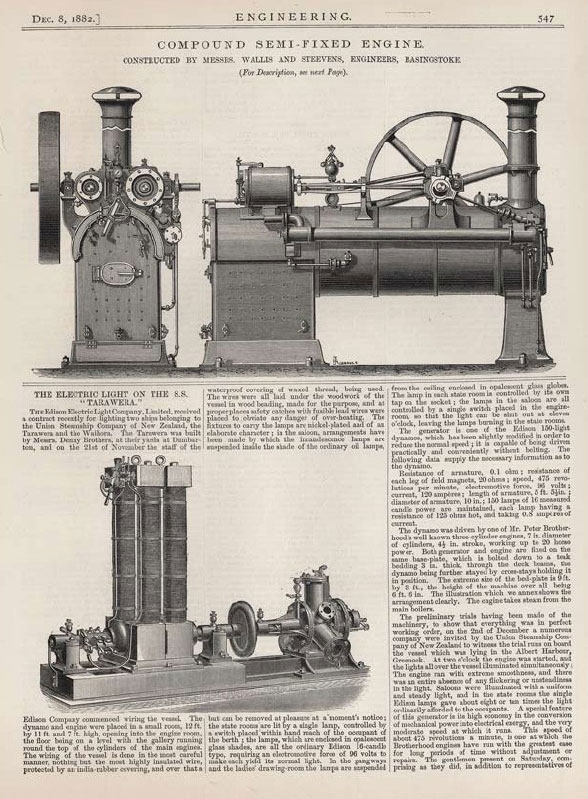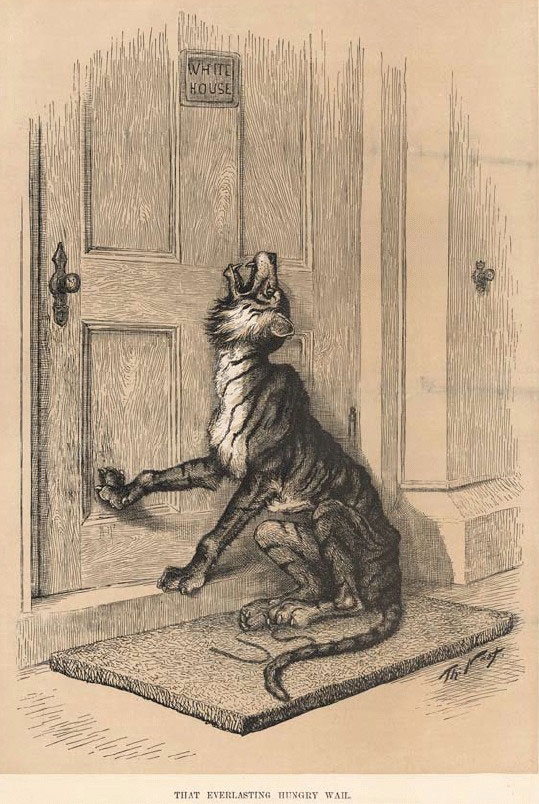- Relief printing
- Intaglio and planographic printing
- Color printing
- Bits and pieces
- Early photography in silver
- Non-silver processes
- Modern photography
- Color notes
- Color photography
- Photography in ink: relief and intaglio printing
- Photography in ink: planographic printing
- Digital processes
- Where do we go from here?
Wood engraving
 Letterpress from wood engraving and metal type. J. H. Rimbault. Compound Semi-fixed Engine from the journal Engineering, December 8, 1882. 1882. 12 x 8¾" (30.5 x 22.2 cm).
Letterpress from wood engraving and metal type. J. H. Rimbault. Compound Semi-fixed Engine from the journal Engineering, December 8, 1882. 1882. 12 x 8¾" (30.5 x 22.2 cm).
The solution to the problem of combining words and pictures on press came in England in the late eighteenth century, with Thomas Bewick’s refinement of wood engraving. Bewick worked as an artist, making precise, beautiful, tiny wood engravings, but the process quickly became established as a commercial system for printing illustrations because the wood engravings could be used in conjunction with metal type. Like woodcut, wood engraving was a relief printing process, but the method differed in the orientation of the wooden printing block and in the cutting tools applied in carving it. Woodcut had used a plank, cut from the tree in the direction of its growth, so that the grain ran along the printing surface. Wood engraving used a block taken horizontally out of the tree, so that the engraving was cut into the end grain of the wood.
 Letterpress from wood engraving. Thomas Nast. That Everlasting Hungry Wail from Harper’s Weekly. October 10, 1885. 14 3/16 x 9 9/16" (36 x 24.3 cm). The Museum of Modern Art, New York. Gift of Richard Benson.
Letterpress from wood engraving. Thomas Nast. That Everlasting Hungry Wail from Harper’s Weekly. October 10, 1885. 14 3/16 x 9 9/16" (36 x 24.3 cm). The Museum of Modern Art, New York. Gift of Richard Benson.
The woodblock had always been cut with a chisel or gouge, woodworking tools with an ancient lineage. The newer wood engraving, cut in end-grain wood, got its name because it was made with a burin, a completely different cutting tool. The burin is small, fits tightly into the hand, and is used horizontally, moving along the wood surface rather than being hammered down into it. At the cutting end there is a lozenge-shaped face, set at an angle, and the lower point of this end is pushed into the surface to make a groove. The burin was probably first developed to do decorative metalwork but is adapted to the cutting of engravings in wood as well. The term “engraving” is connected to the use of this tool; copper engravings, for example, are made with intaglio plates worked with a burin to make grooves in the metal that hold ink. The word “engraving” causes a lot of confusion and we need to remember that it applies to very different sorts of printing.

